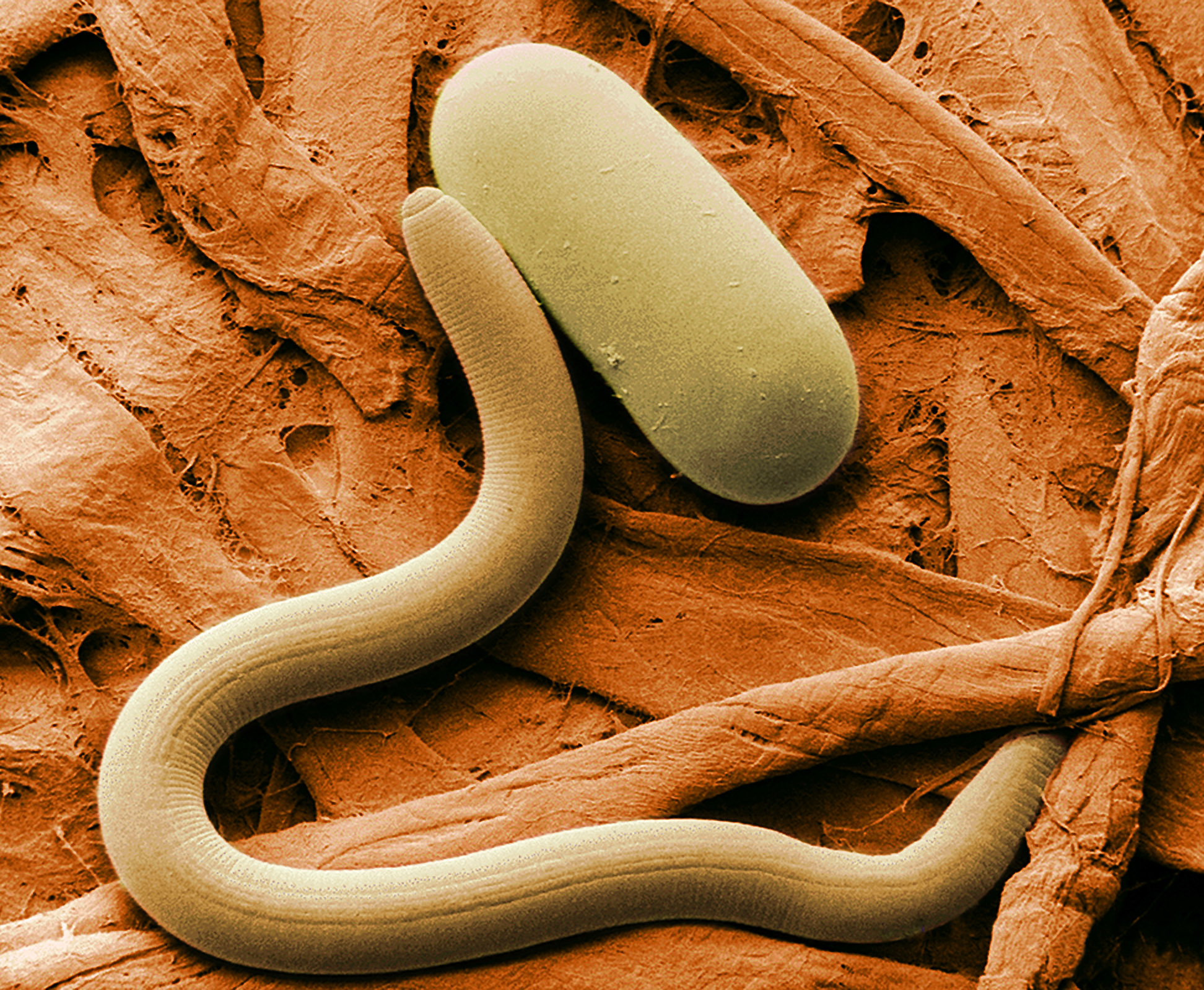- Soybean cyst nematode
Taxobox
name = Soybean cyst nematode

image_width = 200px
image_caption = Soybean cyst nematode and egg
regnum =Animal ia
phylum =Nematoda
classis =Chromadorea
ordo =Tylenchida
familia =Heteroderidae
subfamilia =Heteroderinae
genus = "Heterodera"
species = "H. glycines"
binomial = "Heterodera glycines"
binomial_authority = Ichinohe, 1952The soybean cyst nematode (SCN), "Heterodera glycines", is a plant-parasitic
nematode and a devastating pest of thesoybean ("Glycine max") worldwide. The nematode infects the roots of soybean, and the female nematode eventually becomes acyst . Infection causes various symptoms that may includechlorosis of the leaves and stems, root necrosis, loss in seed yield and suppression of root and shoot growth. SCN has threatened the U.S. crop since the 1950s, reducing returns to soybean producers by $500 million each year and reducing yields by as much as 75 percent.Cooperative State Research, Education, and Extension Service United States Department of Agriculture. 2000. [http://www.csrees.usda.gov/newsroom/impacts/00index/soybeans.htm Keeping the Profits in Soybeans]
] It is also a significant problem in the soybean growing areas ofSouth America andAsia .Biology
The second-stage juvenile, or J2, nematode is the only life stage that can penetrate roots. (The first-stage juvenile occurs in the egg, and third- and fourth-stages occur in the roots). The J2 enters the root moving through the
plant cell s to the vascular tissue where it feeds. The J2 inducescell division in the root to form specialized feeding sites. As the nematode feeds, it swells. The female swells so much that her posterior end bursts out of the root and she becomes visible to the naked eye. In contrast, the adult male regains a wormlike shape, and he leaves the root to in order to find and fertilize the large females. The female continues to feed as her body fills with 200-400 eggs, until she dies. The body of the dead female filled with eggs is referred to as the cyst. The eggs may hatch when conditions in the soil are favorable, or they may remain intact in the soil for several years. Although soybean is the primary host of SCN, other legumes can serve as hosts.Pathology
The aboveground symptoms of SCN infection are not unique to SCN infection, and could be confused with nutrient deficiency, particularly iron deficiency, stress from drought, herbicide injury or another disease. The first signs of infection are groups of plants with yellowing leaves that have stunted growth. The pathogen may also be difficult to detect on the roots, since stunted roots are also a common symptom of stress or plant disease. Observation of adult females and cysts on the roots is the only accurate way to detect and diagnose SCN infection in the field.
Distribution
The SCN is thought to be a native of
Asia . It was first found in theUnited States in 1954 and spread with the expansion of soybean growing areas. SCN was also found inColombia in the 1980s, and more recently in the major soybean producing areas inArgentina andBrazil . SCN has also been reported from Iran and Italy.Control
Cultural practices, such as
crop rotation and the use of resistant cultivars, are used to limit the damage due to SCN. Because SCN is an obligate parasite (requires a living host), a crop rotation involving non-host plants can decrease the population of SCN and has been shown to be an effective management tool. Plants that are already stressed are more susceptiable to infection, so good cultural practices, like maintaining soil fertility, pH and moisture can reduce the severity of infection. Chemical control with nematicides is not normally used because the economic and environmental costs are prohibitive.Notes
References
*Davis, E.L. and G.L. Tylka. 2000. [http://www.apsnet.org/education/LessonsPlantPath/SoyCystNema/ Soybean cyst nematode disease] . The Plant Health Instructor. DOI: 10.1094/PHI-I-2000-0725-01
*Tylka, G. 1995. [http://www.extension.iastate.edu/Publications/PM879.pdf Soybean cyst nematode] . Iowa State University, University Extension
Wikimedia Foundation. 2010.
